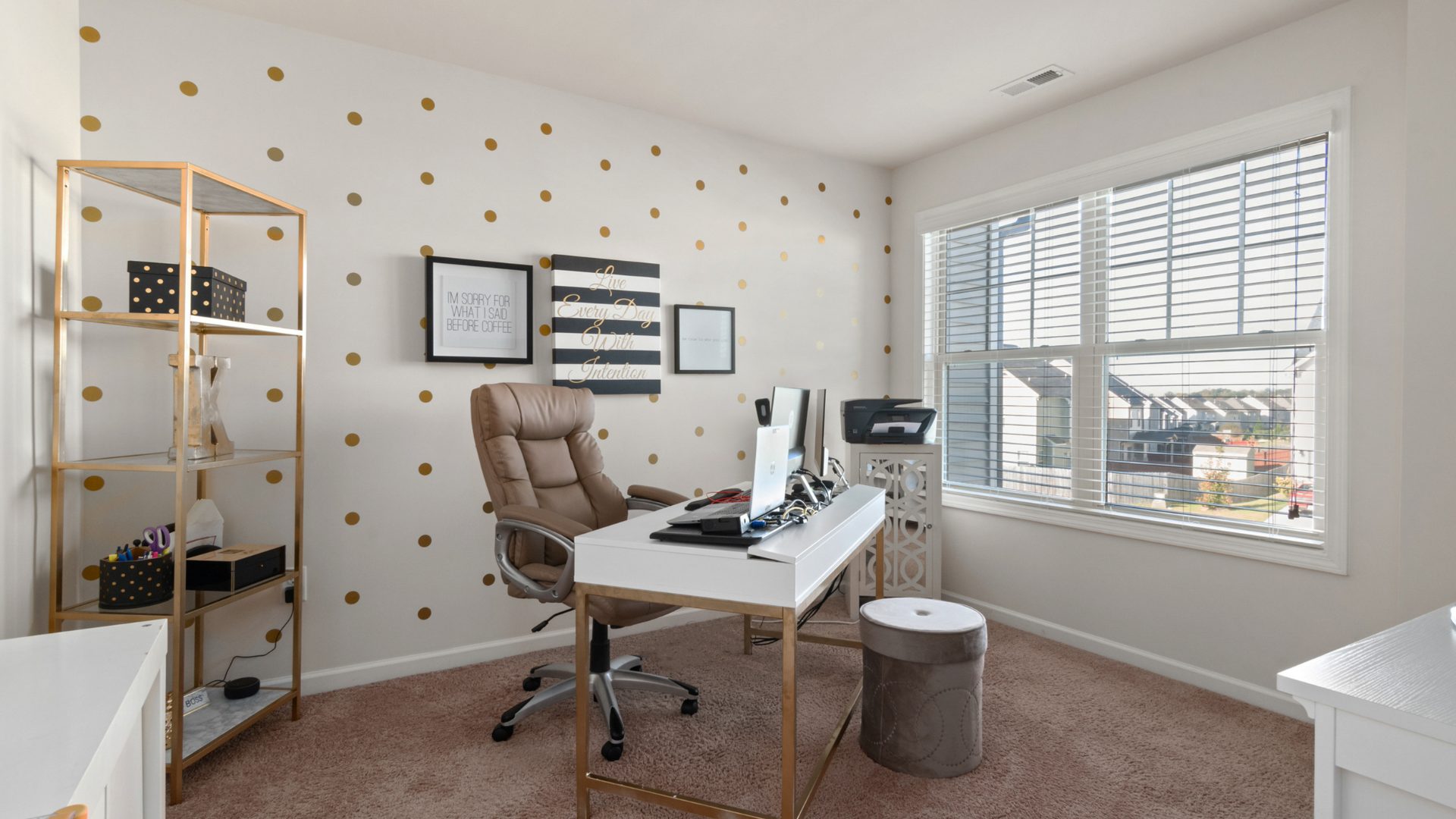More and more people have the flexibility to work from home. And a lot more people are insisting that they work from home these days too. Having a well-designed and functional home office is essential for productivity and work-life balance. Whether you’re starting a new remote job, launching a freelance career, or simply need a dedicated space for studying or personal projects, creating the perfect home office is within your reach. By following these steps, you can design a workspace that promotes focus, creativity, and overall well-being.

Five Steps To Create The Perfect Home Office
Choose The Right Location
Selecting the right location for your home office is crucial for productivity and minimising distractions. Ideally, choose a room or area in your home that can be exclusively used as an office. Separating your workspace from your living areas can help create a boundary between work and personal life.
Look for a location with ample natural light. Sunlight not only enhances mood and productivity but also reduces eye strain. Position your desk near a window if possible, but ensure you have adequate control over glare and direct sunlight. Avoid high-traffic areas or rooms with excessive noise, such as near the kitchen or living room. Consider using sound-absorbing materials, such as thick area rugs or acoustic panels, to reduce noise distractions.
Talk To A Contractor About Converting Your Shed Or Garage
If you require additional space for your home office, consider converting an existing structure, such as a shed or garage. This can provide a dedicated and separate area for work, away from the main living areas. Talk to a professional contractor or architect to assess the feasibility of the conversion and obtain necessary permits. They can guide you through the process and ensure that the structure meets building codes and regulations. Finding carpenters and joiners near you that you can trust isn’t always easy. But you can compare bids and look at real reviews at MyBuilder. They can help you to find local carpenters and joiners that will get the job done the way you want it.
Proper insulation is essential for maintaining a comfortable working environment. Ensure that the converted space is adequately insulated and consider installing heating and cooling systems for year-round comfort. Plan the electrical layout and lighting fixtures in consultation with a professional. Adequate power outlets, lighting, and internet connectivity are essential for a functional workspace. Work with the contractor to design a layout that optimises the available space and suits your workflow. Consider factors such as storage, desk placement, and natural light sources. Enhance security measures for the converted space, including locks, alarms, and window coverings. Privacy is crucial, especially if clients or colleagues visit your home office.
Invest In Ergonomic Furniture
Comfortable and ergonomic furniture is essential for maintaining good posture and preventing strain or injuries during long hours of work. You don’t want to end up like the recent model suggestion, after all. Choose a desk that provides sufficient workspace for your needs. Ensure it is at an appropriate height and offers enough legroom. Adjustable standing desks are a popular choice as they allow you to switch between sitting and standing positions.
Invest in a high-quality ergonomic chair that provides proper lumbar support and promotes good posture. Look for adjustable features, such as height and armrests, to ensure a customised fit. Go for desks with built-in storage drawers or consider adding a separate filing cabinet or shelving unit. Keeping your workspace organised and clutter-free contributes to a productive environment.
Optimise Lighting
Proper lighting is crucial for reducing eye strain and maintaining focus. Position your desk near a window to maximise natural light. Use sheer curtains or blinds to control brightness and minimise glare. Supplement natural light with task lighting, such as a desk lamp or overhead lighting with adjustable intensity. Ensure the light source is positioned to prevent shadows on your work surface. Avoid using bright, fluorescent lights that can cause discomfort and eye fatigue. Think about warm and soft lighting options that mimic natural light. And here’s a little reminder for everyone who needs it: don’t forget to put your reading glasses on if you’re going to be looking at a screen all day.
Create A Productive Atmosphere
The ambience of your home office can significantly impact your productivity and creativity. Choose a colour scheme that promotes focus and tranquillity. Cool colours like blue and green can enhance productivity, while warm colours like yellow and orange can stimulate creativity. Experiment with different shades and find what works best for you.
Decorate your home office with items that inspire and motivate you, such as artwork, plants, or meaningful mementoes. However, be mindful of clutter and ensure that personal items do not become distractions even if Marie Kondo has backtracked on her zero clutter stance. Minimise external noise distractions by using noise-cancelling headphones or playing background music that enhances your focus. Experiment with different types of music, such as classical or ambient, to find what suits your working style. You could think about adding plants to your workspace. They’re certainly less distracting and a lot more calming than putting another screen in the mix!









